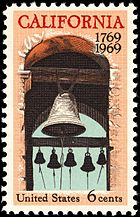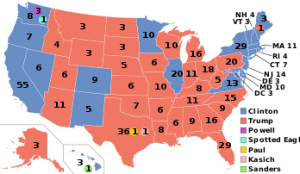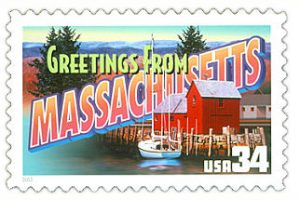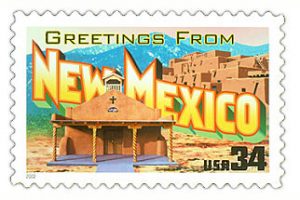Part 22. States refusing to detain criminal illegal aliens are rewarded with longest life expectancy state ranking.
 UTopiAH. This is Part 22 of a series for comparing census based life expectancy and death rate tables, ranking states by how long we live, from 1960 to 2015. Included are medical conditions rating Utah’s #1 health rankings. After the 2016 presidential elections, criminal release states were moved to the top as having longest life expectancy, and detainer states assigned to the bottom of the list.
UTopiAH. This is Part 22 of a series for comparing census based life expectancy and death rate tables, ranking states by how long we live, from 1960 to 2015. Included are medical conditions rating Utah’s #1 health rankings. After the 2016 presidential elections, criminal release states were moved to the top as having longest life expectancy, and detainer states assigned to the bottom of the list.
Part 22. States refusing to detain criminal illegal aliens are rewarded with longest life expectancy state ranking.
As noted in previous Parts, from the censuses of 1960 to 1990, Utah ranked in the best, top quintile (top ten of fifty) for life expectancy. In 1990, Utah ranked #1. The death and census data compilation takes years, so that the 1990 census was eventually compiled by 2004. So the next compilation, was due about 2014, and it came out in 2017. Remarkably the previously best states,  Utah and North Dakota were re-ranked to push them down to the 2nd quintile, and previously mediocre states, such as California, ranking in 3rd and 4th quintiles from 1960 to 1990, were re-ranked to push them up to the top quintile. This was called ‘age-adjusted’ death rates which manipulated the ranks and lists. The new manipulated state ranks place all the ‘sanctuary’ states in the top quintile.
Utah and North Dakota were re-ranked to push them down to the 2nd quintile, and previously mediocre states, such as California, ranking in 3rd and 4th quintiles from 1960 to 1990, were re-ranked to push them up to the top quintile. This was called ‘age-adjusted’ death rates which manipulated the ranks and lists. The new manipulated state ranks place all the ‘sanctuary’ states in the top quintile.
The death data was collected by National Center for Health Statisticsfor 2014 and 2015 from death certificates filed in all 50 states and the District of Columbia and compiled into national data known as the National Vital Statistics System.
 2016 Presidential election Red Republican Trump, Blue Democratic Hillary
2016 Presidential election Red Republican Trump, Blue Democratic Hillary
From the Center for Immigration Studies list of ‘’Sanctuaries at Risk of Disqualification From Federal Law Enforcement Funds Updated November 16, 2017
The Department of Justice announced yesterday [November 15, 2017] that sanctuary jurisdictions will lose access to certain federal law enforcement grants in 2017 if they prohibit officials from communicating with U.S. Immigration and Customs Enforcement (ICE), if they block ICE from interviewing jail inmates, and if they fail to notify ICE of the pending release of criminal aliens ICE is seeking to deport. These particular grants, known as the Byrne Justice Assistance Grants, are the largest source of federal criminal justice funds for state, local and tribal authorities.
Sanctuary Cities List – Alphabetical. States California, Colorado, Illinois, Massachusetts, New Mexico, Oregon, Vermont https://cis.org/Map-Sanctuary-Cities-Counties-and-States
 The following White House fact sheet explains the ‘sanctuary’ issue. Sanctuary Cities Undermine Law Enforcement and Endanger Our Communities Issued on: March 20, 2018.
The following White House fact sheet explains the ‘sanctuary’ issue. Sanctuary Cities Undermine Law Enforcement and Endanger Our Communities Issued on: March 20, 2018.
Our cities should be sanctuaries for Americans – not for criminal aliens. President Donald J. Trump
SANCTUARY CITIES ARE UNDERMINING LAW ENFORCEMENT: Sanctuary jurisdictions obstruct Federal immigration enforcement efforts and put law enforcement at greater risk.
- A “sanctuary city” generally refers to a State or local jurisdiction that refuses to cooperate with Federal immigration enforcement, often by rejecting “detainer” requests from U.S. Immigration and Customs Enforcement (ICE) and refusing to share information relating to potentially removable aliens.
 Detainers are used to request that a State or local law enforcement agency hold a criminal alien in local custody for up to 48 hours after their release on state charges to allow ICE to take custody of the alien and initiate removal proceedings.
Detainers are used to request that a State or local law enforcement agency hold a criminal alien in local custody for up to 48 hours after their release on state charges to allow ICE to take custody of the alien and initiate removal proceedings.- State and local law enforcement agencies routinely detain suspects for violating Federal laws at the request of federal authorities.
- The Constitution and Federal statues allow for ICE to detain illegal aliens, and for local police to do so at ICE’s request, relying on ICE’s determination of probable cause.

Detainers themselves establish probable cause of an alien’s removability and it would be absurd to require ICE to obtain a judicial warrant every time it detained an illegal alien.- Indeed, Congress authorized immigration officers, rather than Federal judges, to issue administrative warrants to arrest aliens based on probable cause to believe they are in violation of the immigration laws.
- If this was necessary under the Fourth Amendment, immigration enforcement would grind to a halt.
- When sanctuary cities refuse to comply with detainer requests, law enforcement officers must carry out their immigration enforcement duties in workplaces, residences, and in the streets.
- This can lead to ICE having to enter dangerous environments to arrest criminal aliens.
- Some sanctuary city officials have gone as far as warning illegal aliens about upcoming immigration enforcement actions, allowing criminal aliens to prepare themselves and putting law enforcement, the public, and the aliens at even greater risk.
ENDANGERING COMMUNITIES: Reckless sanctuary policies endanger the safety of our communities and obstruct immigration enforcement actions which can prevent further crime.
 Too many criminal illegal aliens have been released into American communities and gone on to commit crimes which could have been prevented had ICE been able to take the individuals into custody.
Too many criminal illegal aliens have been released into American communities and gone on to commit crimes which could have been prevented had ICE been able to take the individuals into custody.- In 2016, the San Francisco Police Department (SFPD) arrested a criminal illegal alien for possession of cocaine for sale and other charges.
- The individual had been deported three times previously and had prior convictions for similar offenses but was still released.
- SFPD arrested the individual again in 2017 on charges involving the sale of narcotics, yet the city again refused to comply with an ICE detainer request and the individual was released.
- SFPD arrested an illegal alien and alleged gang member more than ten times between 2013 and 2017 for charges including rape, assault, domestic battery, robbery, and vehicle theft.
- On each occasion ICE’s request to have the individual transferred to their custody or receive notice before his release was denied.
 A criminal illegal alien was arrested in Cook County, Illinois in 2011 for driving on a suspended license from a prior conviction for driving under the influence (DUI).
A criminal illegal alien was arrested in Cook County, Illinois in 2011 for driving on a suspended license from a prior conviction for driving under the influence (DUI).- ICE issued a detainer request but the individual was released from jail and arrested less than a year later for aggravated DUI causing death.
- Activists say sanctuary policies make illegal aliens feel safe enough to report crimes to police.
- Illegally present crime victims and witnesses are eligible for certain immigration benefits, like the U-visa and T-visa, to encourage their cooperation in reporting crime.
IMMIGRATION ENFORCEMENT: President Trump’s Administration has and will continue to pursue strong immigration enforcement based on the rule of law.
- President Trump’s Administration has taken action to ensure our Nation’s immigration laws are faithfully enforced.
- The Department of Justice has filed a legal action regarding three California laws that intentionally obstruct the enforcement of Federal immigration law, regulate private entities that seek to cooperate with Federal authorities, and impede consultation and communication between Federal and State law enforcement officials.
- During fiscal year (FY) 2017, ICE’s Enforcement and Removal Operations (ERO) made more than 140,000 administrative arrests and effected more than 225,000 removals.
- From President Trump’s inauguration through the end of FY 2017, ERO made more than 110,568 arrests compared to only 77,806 in all of FY 2016.
- However, more resources are needed to ensure law enforcement is able to do its job and enforce our immigration laws.
- There are nearly one millions aliens in the United States with final orders of removal but not enough officers or resources to enforce the orders.
- Many sheriffs have backed off of holding criminal aliens for fear of lawsuits.
Disclaimer: The author of each article published on this web site owns his or her own words. The opinions, beliefs and viewpoints expressed by the various authors and forum participants on this site do not necessarily reflect the opinions, beliefs and viewpoints of Utah Standard News or official policies of the USN and may actually reflect positions that USN actively opposes. No claim in public domain or fair use. UTopiAH is a trade mark of the author. Utopia was written in 1516 by Sir Thomas More, Chancellor of England. © Edmunds Tucker.
Utah Standard News depends on the support of readers like you.
Good Journalism requires time, expertise, passion and money. We know you appreciate the coverage here. Please help us to continue as an alternative news website by becoming a subscriber or making a donation. To learn more about our subscription options or make a donation, click here.
To Advertise on UtahStandardNews.com, please contact us at: ed@utahstandardnews.com.


Comments - No Responses to “Part 22. States refusing to detain criminal illegal aliens are rewarded with longest life expectancy state ranking.”
Sure is empty down here...